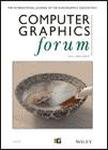版权所有:内蒙古大学图书馆 技术提供:维普资讯• 智图
内蒙古自治区呼和浩特市赛罕区大学西街235号 邮编: 010021

作者机构:Univ Magdeburg Dept Simulat & Graph D-39106 Magdeburg Germany Municipal Hosp Dept Diagnost Radiol Magdeburg Germany Univ Koblenz Landau Inst Computat Visualist Mainz Germany
出 版 物:《COMPUTER GRAPHICS FORUM》 (计算机图形学论坛)
年 卷 期:2016年第35卷第3期
页 面:351-360页
核心收录:
学科分类:08[工学] 0835[工学-软件工程] 0812[工学-计算机科学与技术(可授工学、理学学位)]
主 题:Categories and Subject Descriptors (according to ACM CCS) I.4.9 [Computer Graphics]: Image Processing and Computer Vision&mdash Applications
摘 要:We present an Aortic Vortex Classification (AVOCLA) that allows to classify vortices in the human aorta semi-automatically. Current medical studies assume a strong relation between cardiovascular diseases and blood flow patterns such as vortices. Such vortices are extracted and manually classified according to specific, unstandardized properties. We employ an agglomerative hierarchical clustering to group vortex-representing path lines as basis for the subsequent classification. Classes are based on the vortex size, orientation and shape, its temporal occurrence relative to the cardiac cycle as well as its spatial position relative to the vessel course. The classification results are presented by a 2D and 3D visualization technique. To confirm the usefulness of both approaches, we report on the results of a user study. Moreover, AVOCLA was applied to 15 datasets of healthy volunteers and patients with different cardiovascular diseases. The results of the semi-automatic classification were qualitatively compared to a manually generated ground truth of two domain experts considering the vortex number and five specific properties.